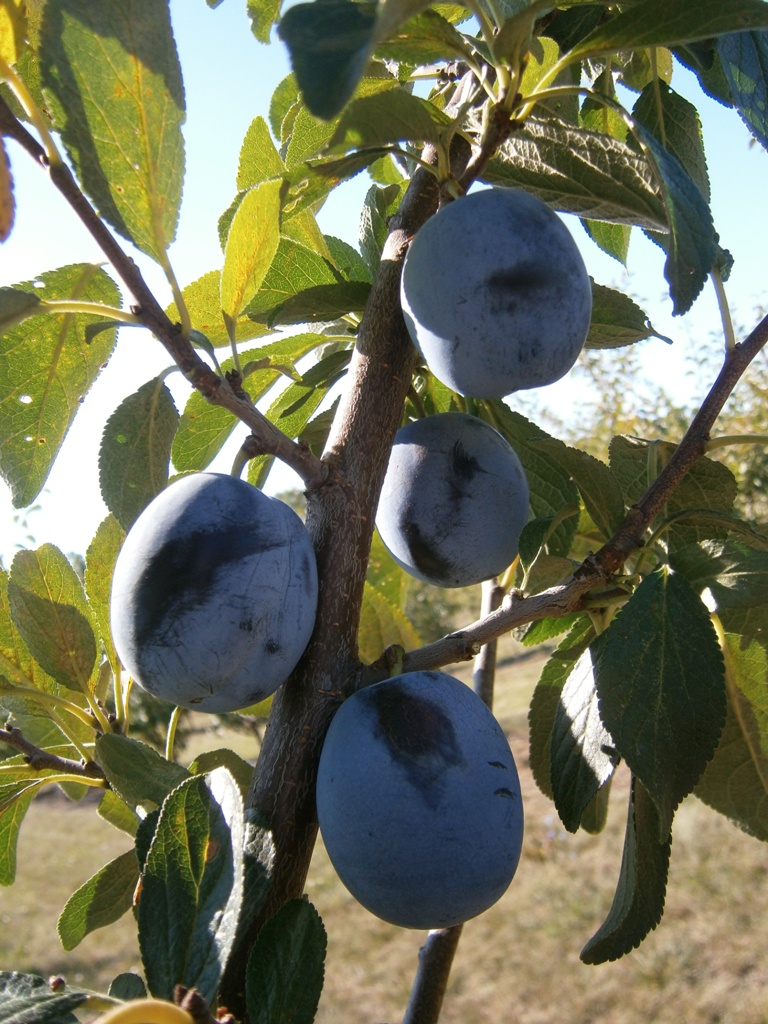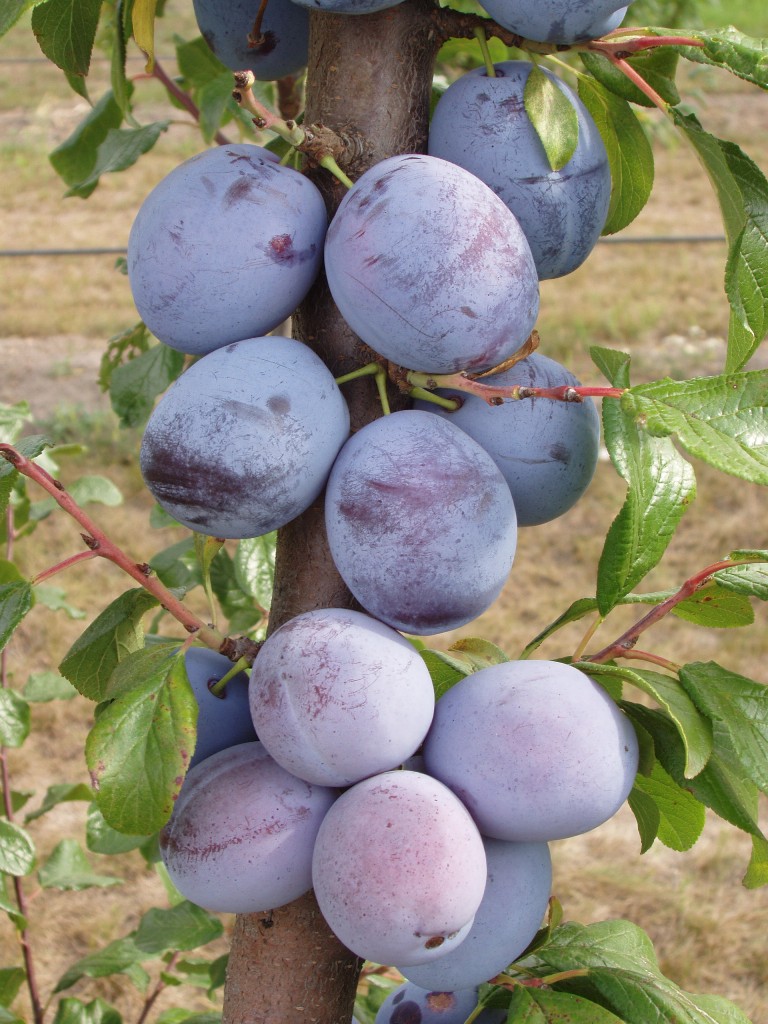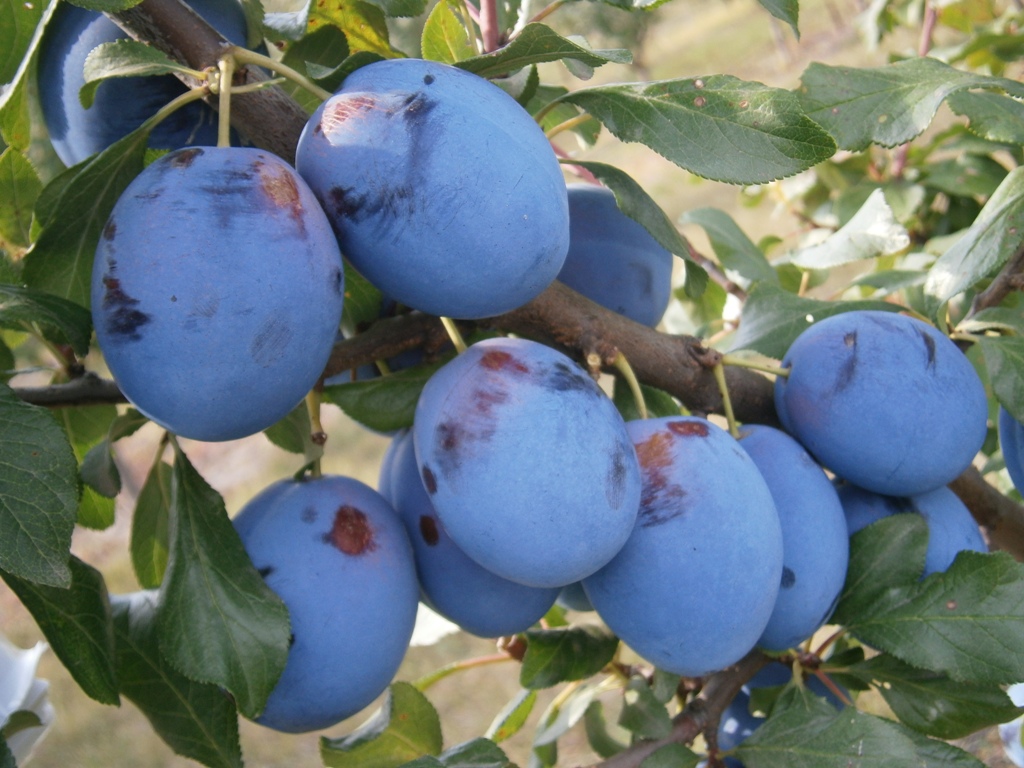Major trends of European and Japanese plum breeding and its results recommended for cultivation
Author: Szilvia Kovács
4.1. History of plum breeding, activity of the main breeding centers
Local plum varieties were propagated by seed and sprout for centuries. Conscious breeding work started in the middle of the 19th century in Europe. The first plum breeder was Knight in England, who created among others the following cultivars which are popular even today: ‘Early Rivers’, ‘Czar’ and ‘President’. This breeding program continuied in the beginning of the 20th century in the research center of East Malling.
After the second World War, European plum breeding started in Romania first (1950), which was followed by the research centers in the former Yugoslavia (1965) and in Italy (Bologna; 1968). Breeding centers were established after one another in Europe in the 70’s and 80’s. However, breeding is a very slow and expensive process, so breeding work was stopped for some time in many countries in the last decades. Today’s most successful breeding centers are situated in Romania (Pitesti), in Germany (Geisenheim, Hohenheim, Weihenstephan) and in Italy (Bologna, Firenze, Marche, Forlí).European breeding centers (excluding Italy) are engaged in creating plum cultivars almost exclusively in the European group ( Prunus domestica L.; Prunus italica convar. claudiana Poiret; Prunus x syriaca orkh. em. Kárpáti).
Creating plum cultivars in the European group was targeted in the USA, Geneva as well at the end of the 19th century. As a result of this program, cultivar ‘Stanley’ was born among others, which has an important role in the cultivation even today. Breeding work is still continuing: they deal with creating cultivars suitable for the fresh market and for multiple purposes. Another significant breeding center can be found in Missouri State (cultivars ‘Bluebell’, ‘Bluefre’, ‘Radiance’), and in Washington State (breeding of PPV resistant cultivars).
The second oldest breeding center of Norh America is situated in Canada. The fresh market cultivars ‘Valor’, ‘Verity’, ‘Vision’, ‘Veeblue’, ‘Voyageur’ and ‘Victory’ are the results among others of this breeding work started in the beginning of the 20th century. Breeders targeted a better frost tolerance, an outstanding fruitfulness and the blue skin colour.
‘Kelsey’ and ‘Abundance’, which are Japanese type plum cultivars, members of the East Asian group, got to the USA from Japan at the end of the 19th century. Burbank was the first to cross these cultivars with Prunus simonii Carr. and other North American species (e.g. Prunus americana Marsh). His varieties grounded the cultivation of Japanese type plums and they are now popular all over the world (e.g.: ‘Beauty’, ‘Burbank’, ‘Duarte’, ‘Santa Rosa’, ‘Shiro’). Later additional crosses were carried out with taxa Prunus angustifolia Marsh. (cultivars ‘Bruce’, ‘Six Weeks’), as well as Prunus cerasifera Ehrh. (e.g. ‘Methley’).
The main breeding centers of Japanese type plum cultivars are still in the USA. In California, some state-owned (UCD, USDA) and a lot of private (e.g. Zaiger, Gerawan, Chamberlin) breeding firms carry out successful breeding work. Their varieties with diverse skin colour, large fruits, firm fruit flesh and an outstanding taste cover an almost 6 months long harvest period. Plum’s interspecific hybrids with apricot (Prunus armeniaca L.) (cultivars ‘Plumcot’, ‘Aprium’, ‘Pluot’) represent a unique fruit quality, but some of them do not have a sufficient fruitfulness. In the south-eastern states of the USA (and also in Californian breeding centers), beside improving fruit quality, resistance breeding is emphasised as well. The aim is to breed cultivars resistant to pathogens most endangering the cultivation (Xanthomonas campestris var pruni, Pseudomonas syringae var syringae, Xylella fastidiosa). Other important breeding centers of Japanese type plum can be found in Brazil, South Africa, Australia, Japan and China.
4.2. Major breeding aims
The major aims of breeding centers can be summarized as follows:
-
improving fruit quality,
-
increasing fruit size,
-
increasing fruitfulness,
-
improving fruit storability,
-
creating cultivars with a better winter hardiness,
-
extending the ripening period (early or late cultivars),
-
improving growth features,
-
increasing disease resistance (PPV!, Monilinia, Xantomonas, ESFYP),
-
improving self-fertility,
-
creating cultivars suitable for different processing purposes (e.g. dried fruit, juice),
-
breeding mirabelles,
-
breeding Japanese type plum cultivars,
-
creating interspecific hybrids.
PPV has now appeared in all plum producing regions, but it causes the biggest economic losses in Europe. So it is not by chance, that almost all breeding centers targeted to create cultivars showing a resistance as high as possible. In breeding centers of Germany (Hohenheim, Weihenstephan), breeders try to create PPV resistant cultivars, which show a hypersensitive reaction against the pathogene. Until now only ‘Jojo’ can be considered as resistant, the other cultivars show more or less susceptibility.
At Japanese type plums, beside plum pox, those phytoplasmatic, bacterial and fungal diseases (European Stone Fruit Yellows Phytoplasma - ESFYP, Xantomonas camprestis var. pruni, Pseudomonas syringae var. syringae, Leucostoma cinctum ( Cytospora cincta)) cause serious problems, which can cause a total decay of the tree beside the drying of twigs, sprigs and branches. Protection against them is difficult, not resolved. It is an important program in Italian and American (USA), mostly private breeding centers to breed cultivars resistant against the above mentioned diseases. Also an important breeding aim of these centers is to create cultivars with better ecological adaptabilty (e.g. better winter and spring frost tolerance, better adaptability to different soil conditions).
One of the main problems of plum cultivation is the low sale prize and the lack of suitable marketing. In favour of a better transportability and a longer shelf-life, fruits are not harvested in suitable maturity. Consumers who try to have a healthy diet, choose other fruits instead of unripe, not so tasty plums. However, among cultivated fruit species, plums have one of the highest antioxidant capacity level. In favour of a better transportability and a longer shelf-life, a targeted breeding work could be a solution.
4.3. Breeding methods
Cross-breeding has a significant role even today in the breeding of new cultivars [e.g. ‘Cacanska lepotica’ (‘Wangenheim’ x ‘Besztercei’)]. The inheritance of diploid plums (e.g. Prunus salicina, Prunus cerasifera, Prunus americana) can be planned well, but in case of hexaploid Prunus domestica cultivars, creating hybrids with the desired characteristics takes a long time. Crosses between species will be significant in the future as well (e.g.P. domesica x P. armeniaca, P. domestica x P. cerasifera, P. cerasifera x P. persica, P. cerasifera x P. armeniaca, P. salicina x P. armeniaca). A number of fruit cultivars with new characteristics were created using this method.
The rate of cultivars formed by natural mutation is around 10% (e.g. ‘Richard’s Early Italian’ from cultivar ‘Italian’; ‘Late Santa Rosa’ from cultivar ‘Santa Rosa’). The practical role of varieties created by artificial mutation (‘Spurdente’ from cultivar ‘Ageni’) is less important.
The selection of positive bud mutations during vegetative propagation of old varieties is significant for cultivation. Clonal selection helped to select individuals of varieties cultivated for centuries (e.g. ‘Besztercei plum’) or decades (e.g. ‘Althanns Gage’), which have favourable characteristics.
Cultivars ‘Agen d’Ente’, ‘Green Gage’ (France), ‘Italian’ (Italy), ‘Sermina’ (England), ‘Tuleu Gras’ (Romania) were selected by regional selection. By recognizing the role of regional varieties (e.g. suitability for special processing), this breeding method comes into view again nowadays.
Naturalization is an other important way of widening the plum variety assortment. However, it has to be ensured, that naturalization is the most successful in cases of those cultivars, which were created under similar ecological conditions.
In creating varieties resistant to plum pox, not only the traditional cross-breeding method is utilized, but gene technology as well. The first transgenic cultivar is ‘HoneySweet’, into which a gene from the virus coat protein was inserted.
4.4. Genetic sources of breeding
Although the number of species in Prunoideae subfamily which are cultivated for their fruit or suitable for rootstock is around 50, the majority of cultivated varieties originate only from a few botanical species. More species were involved in the development of plum cultivars, and the origin of cultivars is often unknown. The taxonomy of plum cultivars is not yet closed. Horticulturally significant plum species are classified according to their place of origin into European, East Asian and North American groups.
For the improvement of fruit quality, Prunus domestica (outstanding fruit quality and taste) and Prunus salicina (large, firm-fleshed, pleasing fruits) are the best, but species Prunus simonii, Prunus americana, Prunus munsoniana and Prunus cerasifera are also used. Disease resistance can be inherited from species Prunus angustifolia, Prunus cerasifera, Prunus hortulana, Prunus spinosa, Prunus umbellata, Prunus allegehaniensis and Prunus besseyi. Prunus munsoniana is used to increase fruitfulness. Late flowering is inherited from Prunus besseyi and Prunus maritima, while early harvest time is inherited fromPrunus cerasifera. Excellent gene sources for the inheritance of good ecological adaptability are species Prunus americana, Prunus besseyi, Prunus nigra and Prunus subcordata. Prunus besseyi and Prunus maritima have a high limit for temperature stress. Prunus subcordata is used to increase drought tolerance, while Prunus simonii, Prunus mexicana, Prunus spinosa and Prunus ussuriensis are used to improve growth characteristics.
4.5. The world’s cultivar use
Different cultivar uses developed in countries depending on ecological conditions and utilization aspects. In areas of the temperate zone with a cooler climate, mainly European plum cultivars are grown, while in Mediterranean and subtropic areas Japanese type plums are popular.
Plum cultivation develops more and more in areas with a warmer climate, where ecological conditions are favourable for Japanese type plum cultivars. Thanks to this, Japanese type plum cultivars represent an increasing rate in the world’s production. Cultivars ‘Santa Rosa’, ‘Shiro’, ‘Methley’, ‘Beauty’, ‘Burbank’ and ‘Friar’ can be found in the variety assortment of almost all countries producing Japanese type plums.
In the USA, in California, varieties ‘Friar’, ‘Angeleno’ and ‘Blackamber’ give 40% of the total Japanese plum yield. Other important cultivars are ‘Santa Rosa’, ‘Simka’, ‘Casselman’, ‘Royal Diamond’, ‘Fortune’, ‘Black Beaut’ and ‘Red Beaut’.
In China, beside local varieties (e.g. ‘Shuili No.3’, ‘Shuilinhong’, ‘Qiuli’, ‘Furonli’, ‘Neili’, ‘Shanghuali’) the quick spreading of the Japanese cultivar ‘Dashizhaosheng’, the Chinese ‘Longyuanqiuli’ and ‘Blackamber’ (USA) can be observed in recent years.
In Italy, the main cultivars of the early season are ‘Sorriso di Primavera’, ‘DoFi Sandra’, ‘Obilnaja’, ‘Carmen Blue’, ‘Shiro’ and ‘Black Star’. Among medium season varieties, ‘Anne Gold’, ‘Blackamber’, ‘Black Gold’, ‘Black Diamond’, ‘Laroda’, ‘Fortune’, ‘Golden Plumza’ and ‘Friar’ are the most popular. As late cultivars, ‘Green Sun’, ‘Tracy Sun’, ‘Angeleno’ and ‘Autumn Giant’ are grown.
In Spain , varieties ‘Angeleno’, ‘Larry Ann’, ‘Songold’, ‘Fotuna’, ‘Black Diamond’, ‘Blackamber’, ‘Red Beaut’, ‘Black Beaut’ and ‘Black Gold’ are popular.
Among European plum cultivars grown for fresh consumption purposes, the most popular ones are ‘Stanley’, ‘Anna Spath’, ‘Bluefre’, ‘President’, ‘Italian’, ‘Cacanska rana’, ‘Cacanska rodna’ and ‘Althann Gage’. The leading cultivar of Northern European countries is ‘Victoria’. For dried fruit production, mainly variety ‘Ageni’ and its derivatives (selected variants and hybrids) are cultivated worldwide. In the countries of Eastern Central Europe, the cultivation of ‘Besztercei plum’ has traditions. Unfortunately, because of the susceptibility to Plum Pox Virus, its cultivation area has extremely decreased in the last three decades. New, highly fruitful, often self-fertile, more sharka resistant German, Serbian and Romanian cultivars have an increasing importance (e.g. ‘Jojo’, Top-series, ‘Valjevka’).
Cultivation of mirabelles is significant in France at present. The breeding center of Geisenheim, Germany has a successful mirabelle breeding program. Beside fresh consumption, this group is suitable for compote and premium quality palinka production as well.
Large-fruited, very high-yielding, but virus susceptible cherry plum cultivars (Prunus cerasifera) are popular in the territory of the former Soviet Union and in Turkey. Prunus cerasifera , beside other plum species, can be well crossed with sweet cherry, apricot, peach and almond varieties. In economic aspects, its hybrids with Prunus salicina are significant. Major breeding centers are situated in Russia, Latvia and Belarus. Its early-ripening, diverse coloured, rounded fruits are suitable not only for fresh consumption, but also for processing (juice production), and stand temporary storage well.
4.6. Aspects of cultivar selection and association
Cultivar selection is determined by market needs, ecological conditions and characteristics of cultivation technology. For the fresh market, cultivation of early or late, large-fruited European plums, Japanese type plums, as well as apricot-plum hybrids is recommended. For storage, late-ripening, large-fruited cultivars with a higher dry matter content and a firmer flesh are more suitable. For processing, medium and late-ripening varieties with a high dry matter content are the best. Confectionary industry prefers small, mostly round-fruited plum varieties, while refrigeration industry needs a showy, long-lasting flesh colour and a closed stone suture.
European plum can successfully be cultivated in Hungary in all fruit growing areas. Cultivation of mirabelles is safe on warm, protected sites. Growing of Japanese type plum cultivars, as well as apricot and plum hybrids is the safest on high areas with a balanced climate (hilltops, hillsides).
For growers, those cultivars are preferable, which have an early onset, a high and regular yield, an optimal canopy form and branch system, which adapt well to the habitat and are resistant to pathogens and pests.
During orchard planning, beside the above mentioned aspects, it is highly important to know the flowering time, fertility relations and possible pollinators of the given cultivar.
The European plum cultivars in today’s cultivation are described by diverse fertility relations: every stage occurs from total self-sterile to highly self-fertile. Male sterility was also described in case of some cultivars. In creating new varieties, the highest possible rate of self-fertility is targeted to improve yield security. However, if a highly self-fertile cultivar is associated with a pollinator, oversetting can cause serious problems. Mutual sterility occurs in a low rate among European plum cultivars.
Japanese type plum cultivars as well as apricot-plum hybrids are self-sterile, with some exceptions (e.g. 'M. N. Sun’). Their flowering period is 7-10 days before that of European plum cultivars. In the selection of pollinators, factors hindering cross-pollination have to be taken into consideration (incompatibility). In Hungary, the first inter-incompatibility case was observed between ‘Methley’ and ‘Shiro’. Later examinations proved gametophytic incompatibility regulated by genes of S-locus in a lot of cultivars.
To achieve a secure yield, a fertility rate of at least 20% is necessary in case of European plum cultivars and 5-10% in case of Japanese type cultivars.
4.7. Cultivars which can be recommended for planting
Beside literature sources, our own observations were also used in describing cultivars recommended for orchards.
4.7.1. European plum cultivars
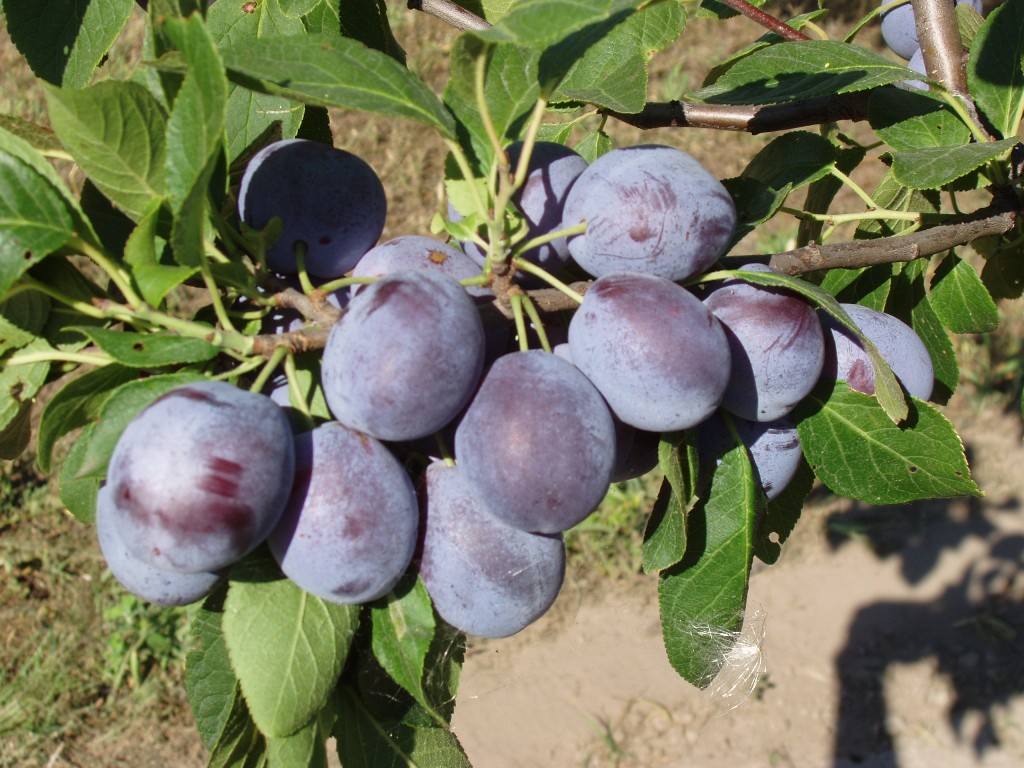
Figure 4.1. Katinka (Photo: Szilvia Kovács)
Katinka
Parent varieties: ‘Ortenauer’ x ‘Ruth Gerstetter’. A German cultivar (Hohenheim), ripens in the middle-end of July (Figure 4.1.). The fruits are suitable for fresh consumption and for processing (e.g. dried fruit, plum dumplings). The fruits are small-medium large (20-25 g), violet blue, very tasty, freestone. Highly vigorous, has an upright canopy habit. Its flowering is early-medium early, self-fertile. It has an early onset, high-yielding, susceptible to oversetting. Susceptible to frosts during flowering. According to Hungarian experiences, the leaf shows intense symptomes of Plum Pox, while fruits show slight symptomes.
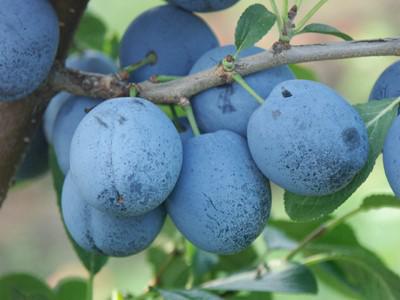
Figure 4.2. Topfive (Source: http://www.schreiber-baum.at/zwetschken.htm)
Topfive
Parent varieties: ‘Cacanska najbolja’ x ‘Auerbacher’. A German cultivar (Geisenheim) ripening in the first decade of August. Recommended mostly for fresh consumption. The fruits are medium large (35-40 g), dark violet, freestone when ripe, have an outstanding taste (Figure 4.2.). Moderately vigorous, has a spreading canopy. Has an early onset, very high-yielding. Susceptible to oversetting, alternancy. Its flowering is medium early, not susceptible to spring frost during flowering. Has a good self-fertility, but a pollinator is recommended (e.g. ‘Cacanska lepotica’). Tolerant to plum pox virus.
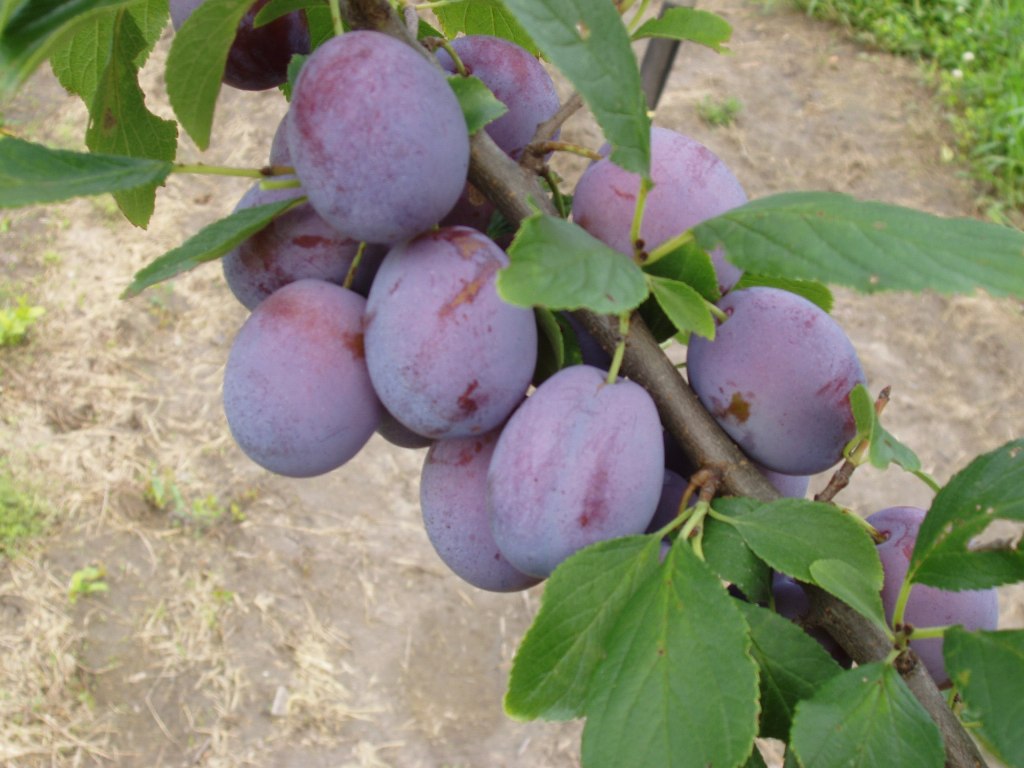
Figure 4.3. Hanita (Photo: Szilvia Kovács)
Hanita
Parent varieties: ‘President’ x ‘Auerbacher’. A German cultivar (Hohenheim) ripening in the middle-end of August. Suitable mainly for fresh consumption. The fruits are medium large (30-35 g), have a violet-blue skin, freestone, have an outstanding taste (Figure 4.3.). The tree is highly vigorous, has an upright canopy. Blooms in the medium period. Self-fertile. Has an early onset, high-yielding. Slightly susceptible to Plum Pox Virus (slight leaf symptoms), but shows no symptoms on fruits.
Figure 4.4. Toptaste (Fotó: Szilvia Kovács)
Toptaste
Parent varieties: ‘Valor’ x ‘Hauszwetsche’. A German cultivar (Geisenheim) ripening in the last decade of August. Outstanding for fresh market, but makes a good palinka as well. The fruits are medium large-large (35-40 g), blue violet, semi-freestone, have an outstanding taste (Figure 4.4.). Moderately vigorous, has an upright canopy. Has an early onset and a good fruitfulness, ripens for a long period. Its flowering is medium, slightly susceptible to spring frosts during flowering. Has a good self-fertility, but a pollinator is recommended. Resistant to plum pox virus.
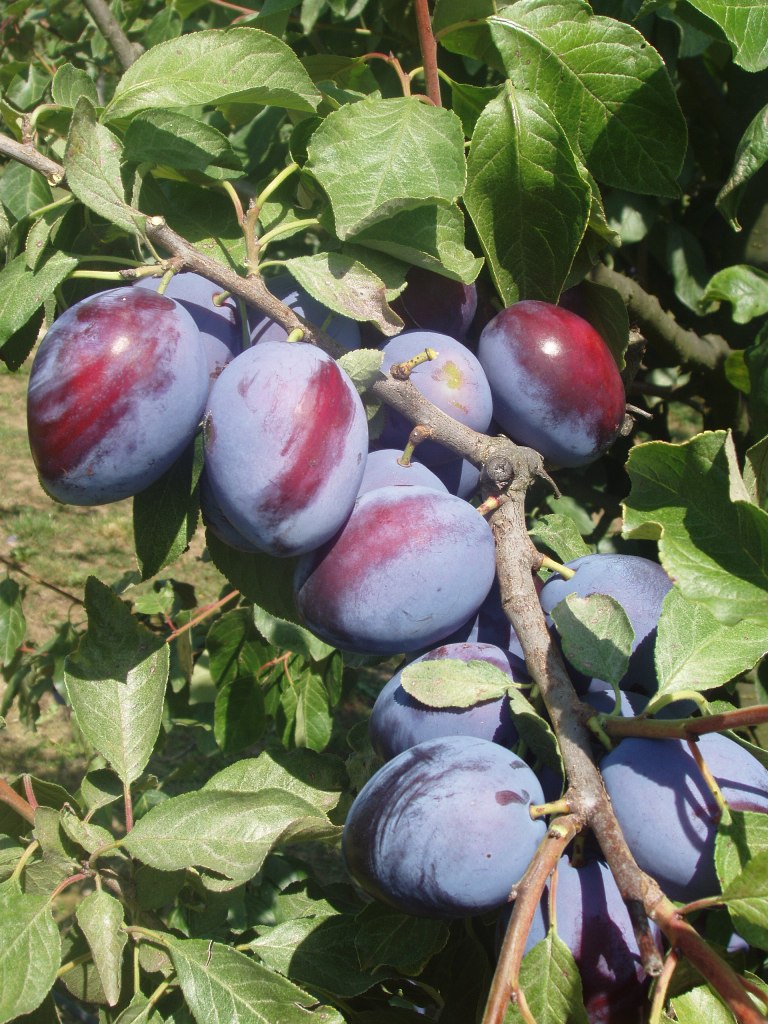
Figure 4.5. Empress (Fotó: Szilvia Kovács)
Empress
A cultivar of unknown origin. Ripens at the end of August – beginning of September (Figure 4.5.). A market variety certified by the state in 2009. Suitable mainly for fresh consumption. Its large-very large fruits (50-60 g) have a dark violet blue skin, they are freestone, juicy, suitable for transport at 75-80% of full maturity. It can reach an outstanding yield if planted together with ‘President’. The tree is moderately-slightly vigorous, with a spreading canopy. Has a very early onset, high-yielding.
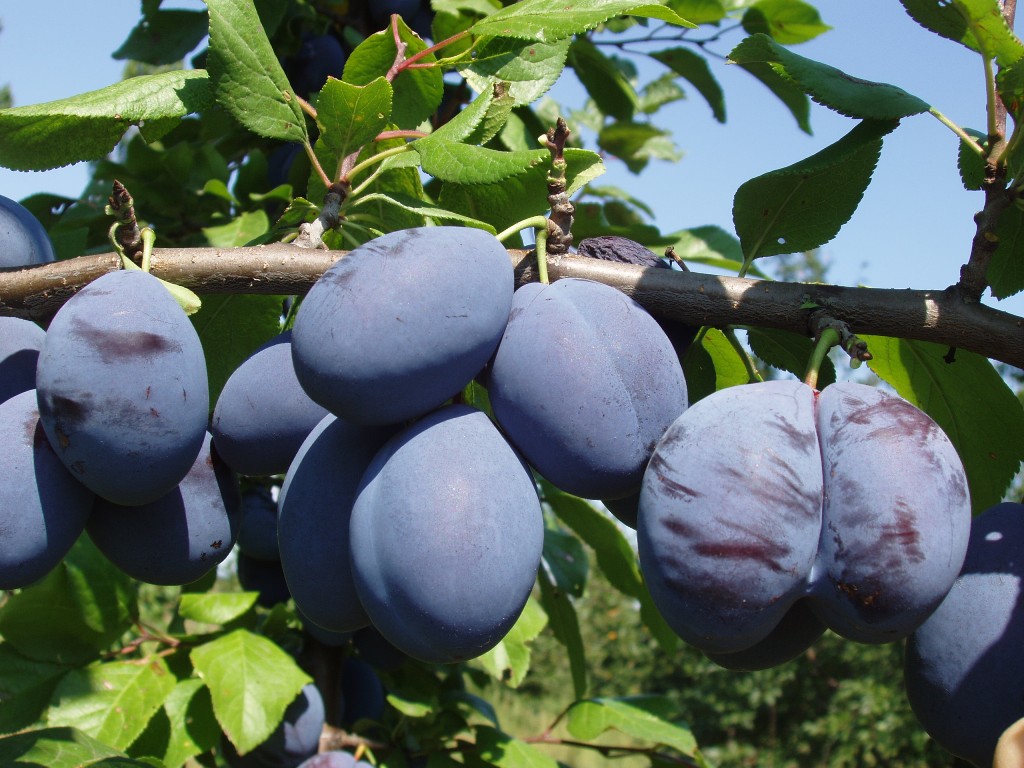
Figure 4.6. Jojo (Fotó: Szilvia Kovács)
Jojo
Parent varieties: ‘Ortenauer’ x ‘Stanley’. A German cultivar (Hohenheim), ripens at the beginning of September (Figure 4.6.). In Hungary it was certified by the state in 2012. The fruits are medium large (30-35 g), dark blue, freestone, tasty. Has an early onset, high-yielding. Its tree is moderately vigorous, with a spreading canopy. Self-fertile. Its flowering is medium, susceptible to spring frosts during flowering. It has an early fruit coloration. Resistant to plum pox virus.
Figure 4.7. Tophit (Fotó: Szilvia Kovács)
Tophit
Parent varieties: ‘Cacanska najbolja’ x ‘President’. A German cultivar (Geisenheim), ripens at the beginning-middle of September (Figure 4.7.). Suitable for fresh consumption, can be well stored. Its fruits are large (50-60 g), violet, freestone, have a harmonic taste. Has a very early onset, yields high and regularly. Its flowering is medium, not susceptible to spring frosts during flowering. A pollinator is recommended when planting. Susceptible to oversetting and discontinuous yield, fruit thinning is recommended. The tree is moderately vigorous, with a slightly upright canopy. Tolerant to plum pox virus, but susceptible to Monilinia.
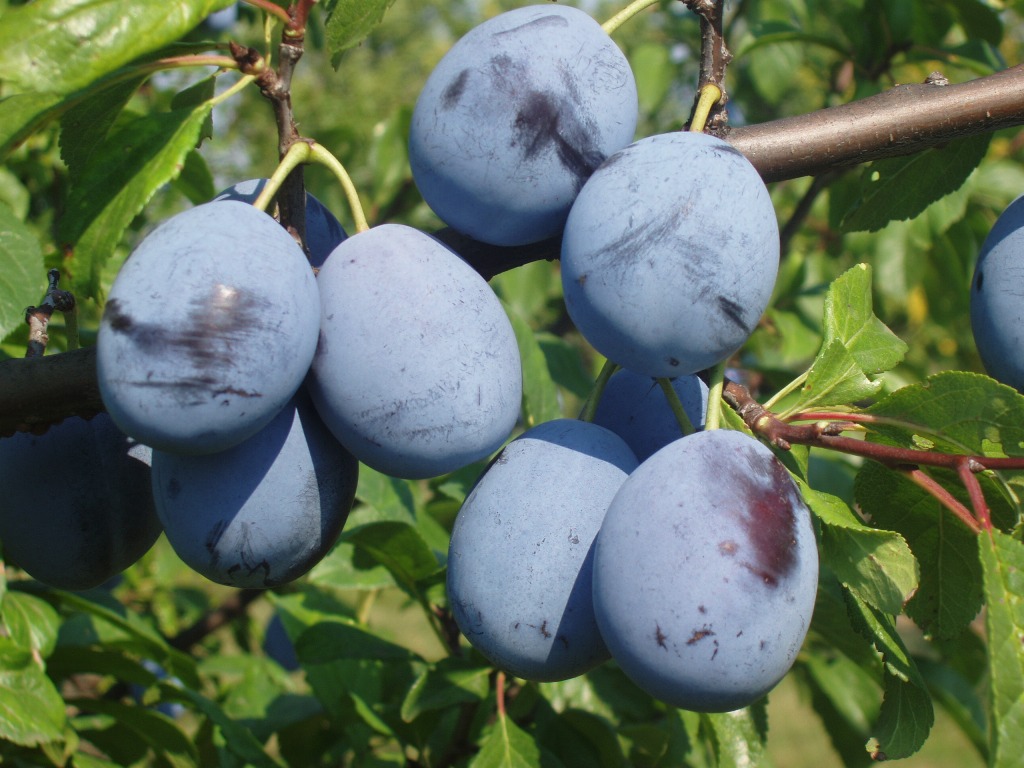
Figure 4.8. Elena (Fotó: Szilvia Kovács)
Elena
Parent varieties: ‘Fellenberg’ x ‘Stanley’. A German cultivar (Hohenheim) ripening in the middle-end of September. Suitable for fresh consumption and processing. The fruits are medium large (25-30 g), dark blue, freestone, with a thick skin and a pleasant taste (Figure 4.8.). Its fruits are semi-freestone and contain less juice in arid habitats. Fruits can be left on the tree for long. Has an early onset, high-yielding. Self-fertile, its flowering is medium, slightly susceptible to spring frosts. The tree is vigorous. Tolerant to plum pox virus.
Figure 4.9. Topend Plus (Fotó: Szilvia Kovács)
Topend Plus
Parent varieties: ‘Cacanska najbolja’ x ‘Valor’. A German cultivar (Geisenheim) ripening in the middle-end of September, recommended for fresh consumption. The fruits are medium large-large (45 g), violet blue, tasty, freestone (Figure 4.9.). The harvest period is long, can be stored well. Self-fertile. Its flowering is medium early, slightly susceptible to spring frosts during flowering. Has an early onset, high-yielding. It is moderately vigorous. Resistant to plum pox virus.
4.6.2. Mirabelle cultivars
‘Bellamira’ and ‘Miragrande’, described below, are German cultivars (Geisenheim) ripening in August. Their small fruits (16-20 g), beside fresh consumption are suitable mainly for processing (jam, confectionary, spirits industry). Their fruits have a golden skin, spotted by red on the sunny side, freestone. Their golden fruit flesh is juicy, have a distinguished mirabelle taste. They are self-fertile and have a late flowering. Both cultivars are characterized by a good fruitfulness and a long harvest period. Their onset is very early.
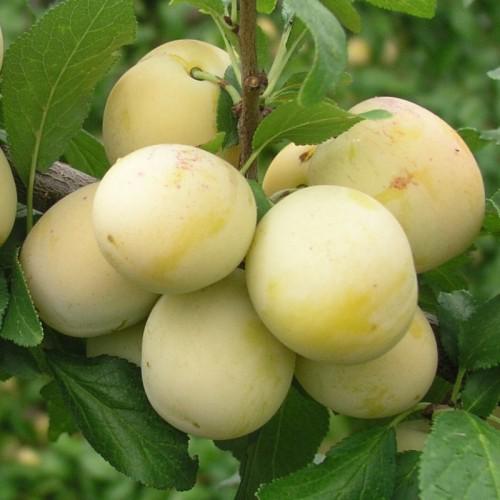
Figure 4.10. Bellamira
(Forrás: http://www.markenbaumschule.de/de/Obst/Mirabellen/Mirabelle-Miragrande---S---1-j-Vg--------Pr655/2/503)
Bellamira
Parent varieties: ‘Cacanska najbolja’ x ‘Mirabelle von Nancy’. Ripens at the beginning-middle of August. The fruits are susceptible to cracking in rainy weather. Moderately vigorous. Tolerant to plum pox virus, slightly susceptible to Monilinia.
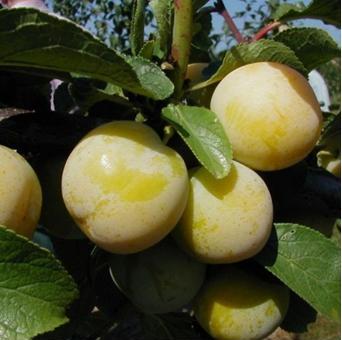
Figure 4.11. Miragrande
(Source: http://www.markenbaumschule.de/de/search?page=search&page_action=query&desc=on&sdesc=on&keywords=Miragrande&x=0&y=0 )
Miragrande
Parent varieties: ‘Mirabelle von Herrenhausen’ x ‘Yellow Prune’. Ripens at the end of August, beginning of September. Highly vigorous. Less susceptible to fungal diseases.
4.7.3. Japanese type plum cultivars
Cultivars of the early and medium early ripening group
An example to the early group is ‘Sorriso di Primavera’, while the medium early group contains varieties ‘Shiro’ and ‘Obilnaja’. They are characterized by a regular and high yield. According to Hungarian experiences, their frost tolerance is good.
‘Sorriso di Primavera’ and ‘Shiro’ are used mainly as pollinators in the orchards, but they can be sold also in the fresh market because of their early ripening. Their fruits are clingstone, juicy, tasty, have a soft flesh.
Novelties of the early group are ‘DoFi Sandra’ and ‘Carmen Blue’, which are recently more and more popular in Italy.
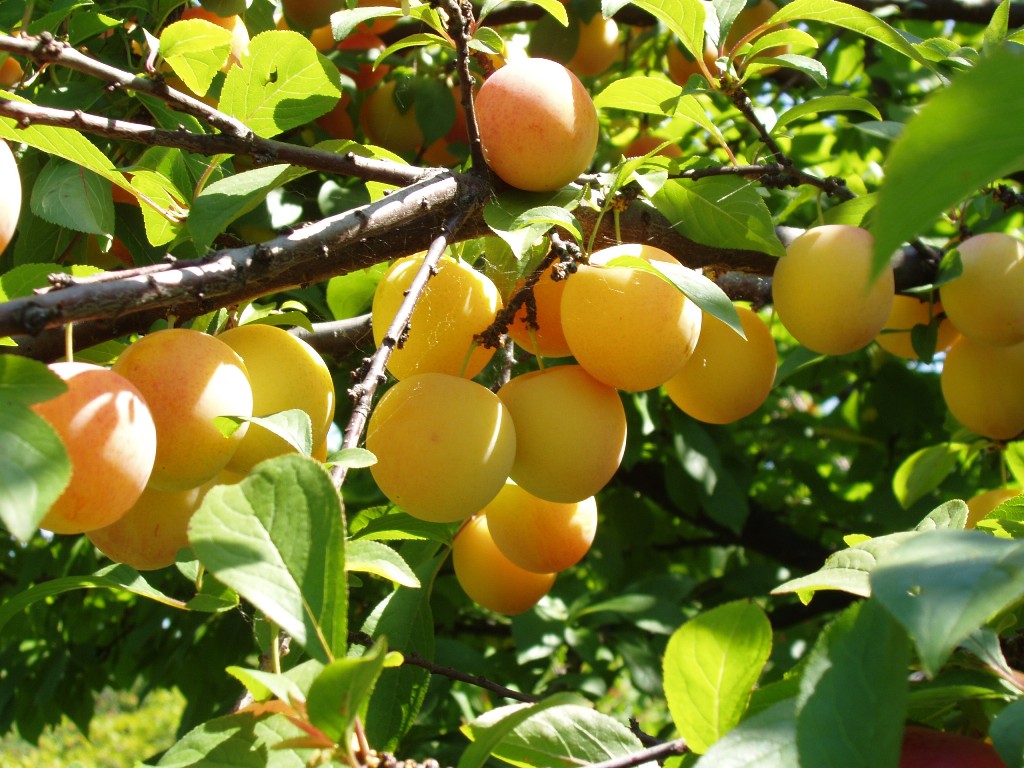
Figure 4.12. Sorriso di Primavera (Photo: Szilvia Kovács)
Sorriso di Primavera
Parent varieties: ‘Shiro’x local cherry plum. A hybrid created in Italy. Its medium large (30-35 g), clingstone fruits ripen in the first-second decade of June (Figure 4.12.). The fruit skin is greenish yellow, orange red on the sunny side when ripe. Self-sterile, high-yielding. Pollinators: ‘Shiro’, ‘Santa Rosa’. The tree is highly vigorous, with a spreading canopy. The fruits are slightly susceptible to cracking in rainy weather.
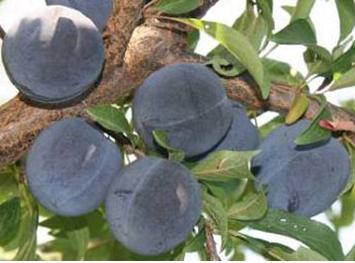
Figure 4.13. DoFi Sandra (Source: http://www.ars-alimentaria.it/ars/scheda.jsp;jsessionid=DBE0267B0F957A4E1F3173D517F78131?codice_ricerca=Z1346272008704RA362&id=3141116&tipo=prodotto&lingua=it_IT)
DoFi Sandra
Parent varieties: ‘Black Gold’ x ‘Burmosa’. Ripens in the middle of August, it was bred in Italy. Its blackish blue, medium large, firm-fleshed, clingstone fruits are tasty when totally ripe (Figure 4.13.). Has a very early onset, yields high and regularly. Self-sterile. Pollinators: ‘Sorriso di Primavera’, ‘Shiro’, ‘Angeleno’. Moderately vigorous.
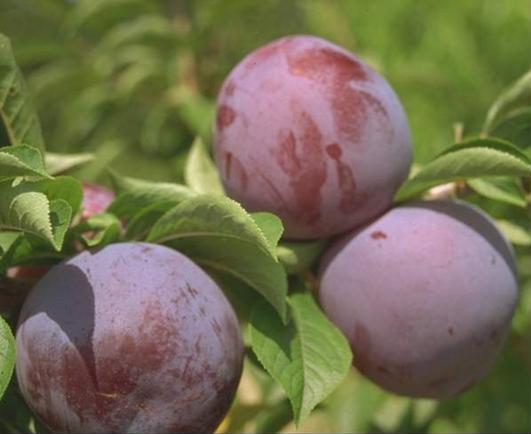
Figure 4.14. Carmen Blue (Source: http://www.vivaicalderoni.it/varieta.cfm?idVar=137)
Carmen Blue (Carmen)
It is a cultivar bred in Italy, protected by the EU. Ripens in the middle of July. Its medium large, rounded fruits are violet blue (Figure 4.14.). They have an outstanding taste, suitable for fresh market and processing as well. It can easily be transported. Self-sterile. Pollinators: ‘Sorriso di Primavera’, ‘Shiro’. High-yielding, moderately vigorous. Susceptible to discontinuous yield.
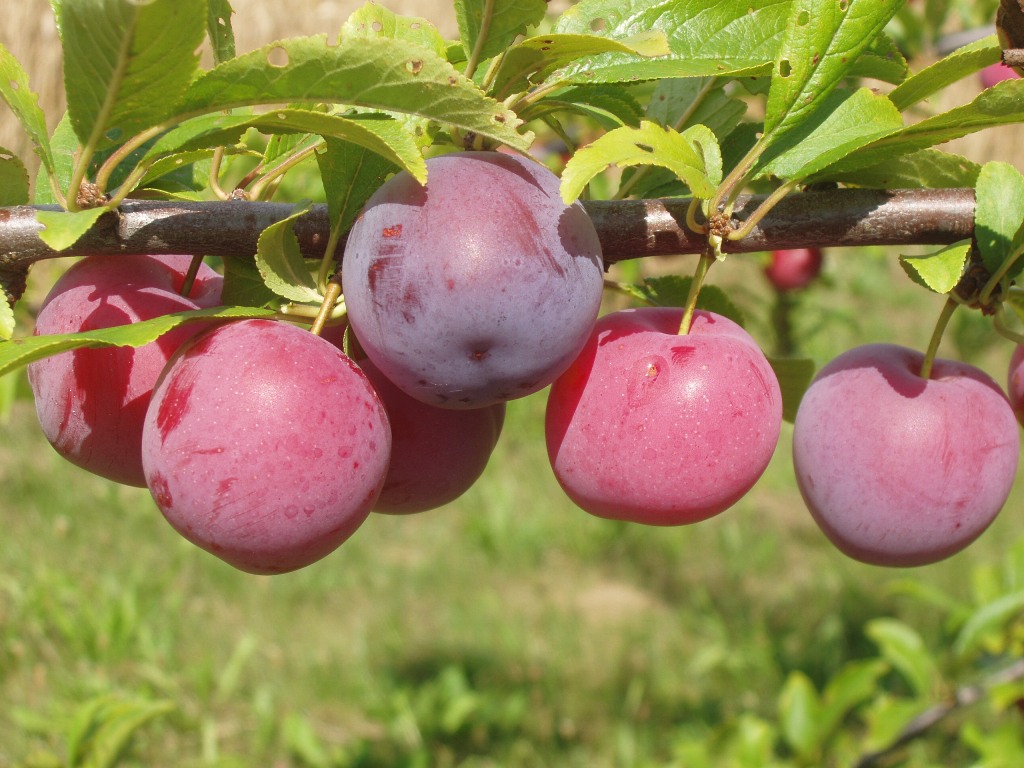
Figure 4.15. Obilnaja (Fotó: Szilvia Kovács)
Obilnaja
Parent varieties: ‘Burbank’ x ‘Tavricseszkaja’. It is a cultivar ripening in the third decade of July, created in the former Soviet Union. The fruits are large (35-40 g), blue violet, medium taste, semi-freestone (Figure 4.15.). The tree is highly vigorous, with a spreading canopy. It has an early onset, good-yielding, susceptible to oversetting. Self-sterile. Pollinators: ‘Shiro’, ‘Sorriso di Primavera’. Used as a pollinator as well in orchards.
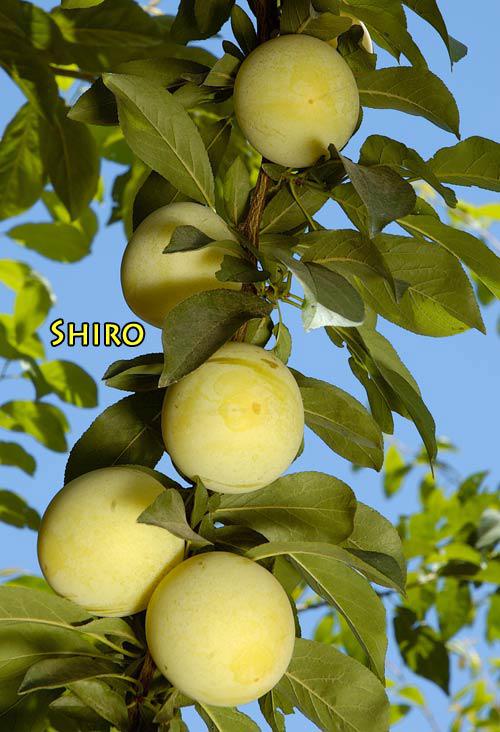
Figure 4.16. Shiro
(Source: http://www.davewilson.com/br40/br40_trees/plumPrune.html)
Shiro
Parent vareties: (P. simonii x P. salicina) x (P. cerasifera x P. munsoniana). It was created in California at the end of the 19th century. Ripens in the second-third decade of July. Its fruits are large (50 g), greenish yellow, clingstone (Figure 4.16.). The tree is vigorous, with a spreading canopy. Has a very early onset, yields high and regularly. Self-sterile. Recommended pollinators: ‘Angeleno’, ‘Santa Rosa’, ‘Sorriso di Primavera’. S-genotype: Sf. Susceptible to branch canker.
Cultivars of the medium ripening group
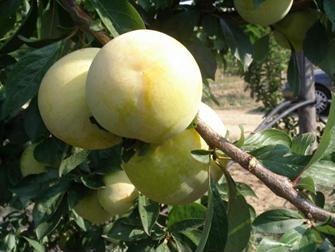
Figure 4.17. Anne Gold (Source: http://www.vivaicalderoni.it/varieta.cfm?idVar=139)
Anne Gold (Anna)
It is a cultivar ripening at the end of July, beginning of August, bred in Italy, protected by the EU. The fruits are medium large, rounded, have a greenish yellow skin, very tasty (Figure 4.17.). They are suitable for fresh consumption and processing as well. It can easily be transported. Self-sterile. Recommended pollinators: ‘Shiro’, ‘Sorriso di Primavera’. Moderately vigorous, high-yielding. The fruits are susceptible to sunburn.

Figure 4.18. Fortune (Source: http://www.vivaicalderoni.it/varieta.cfm?idVar=143)
Fortune
Parent varieties: ‘Laroda’ x (‘Queen Ann’ x ‘Santa Rosa’). This cultivar ripens in the last decade of August, has an outstanding taste, it was created in the USA. Its very large fruits (90-120 g) have a reddish violet colour, a firm flesh, they are freestone (Figure 4.18.). The tree is moderately vigorous, with an upright canopy. Self-sterile. Its pollinators: ‘Santa Rosa’, ’Friar’, ‘Laroda’. Has an early onset, yields moderately.
Cultivars of the late ripening group
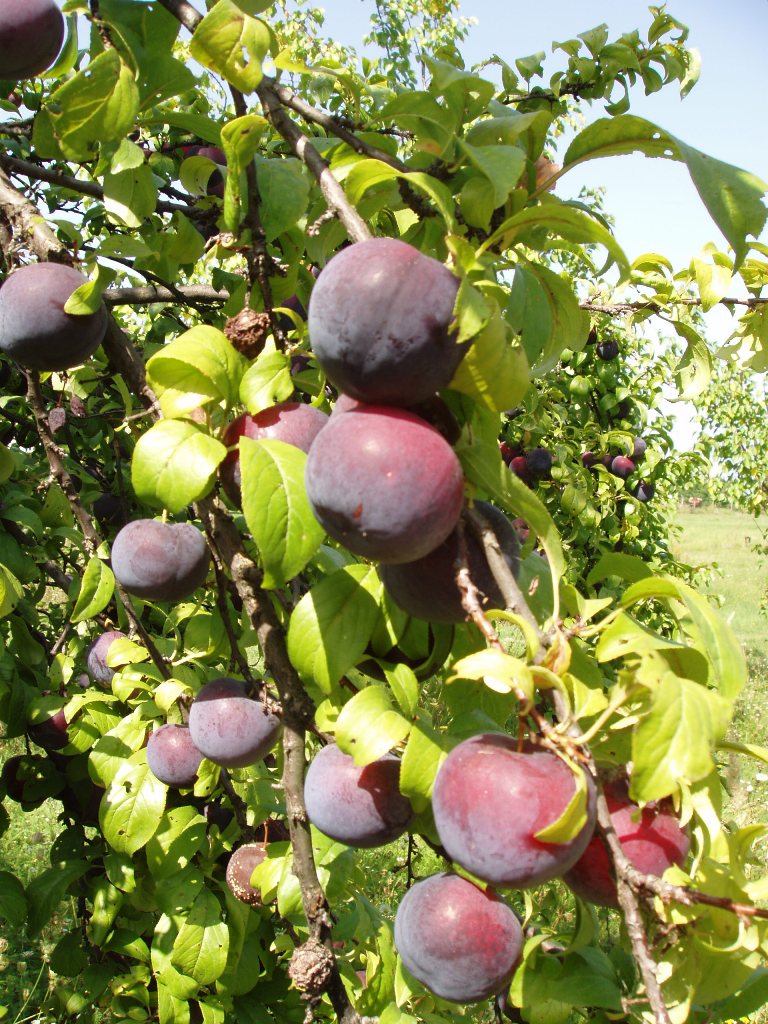
Figure 4.19. Angeleno (Photo: Szilvia Kovács)
Angeleno (Suplumsix)
Origin: an open pollinated seedling of ‘Queen Ann’, created in the USA, a protected variety. The fruits are very large (60-70 g), have a firm flesh, semi-freestone, easy to handle and transport (Figure 4.19.). Can be stored easily. Self-sterile. Its pollinators: ‘Sorriso di Primavera’, ‘Friar’, ‘Obilnaja’, ‘Black Gold’, ‘Black Diamond’. S-genotype: ScSh. The tree is highly vigorous, with a spreading canopy. Has a late onset. Characterized by a regular and high yield.
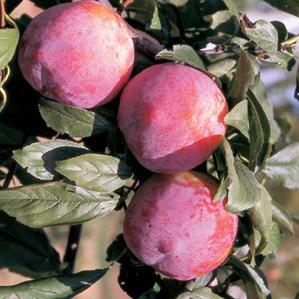
Figure 4.20. Autumn Giant (Source: http://www.battistinivivai.com/sito/home_page/
prodotti/fruttiferi/susino/autumn_giant_r_gituma)
Autumn Giant
A cultivar bred and protected in California. Ripens in the middle-end of September. The fruits are large-very large, have a reddish violet skin, semi-freestone, tasty (Figure 4.20.). They can easily be transported. Develops a vigorous tree. Self-sterile. Pollinators: ‘Simka’, ‘Santa Rosa’. Has a good and regular fruitfulness.
14.6.4. Apricot-plum interspecific hybrids
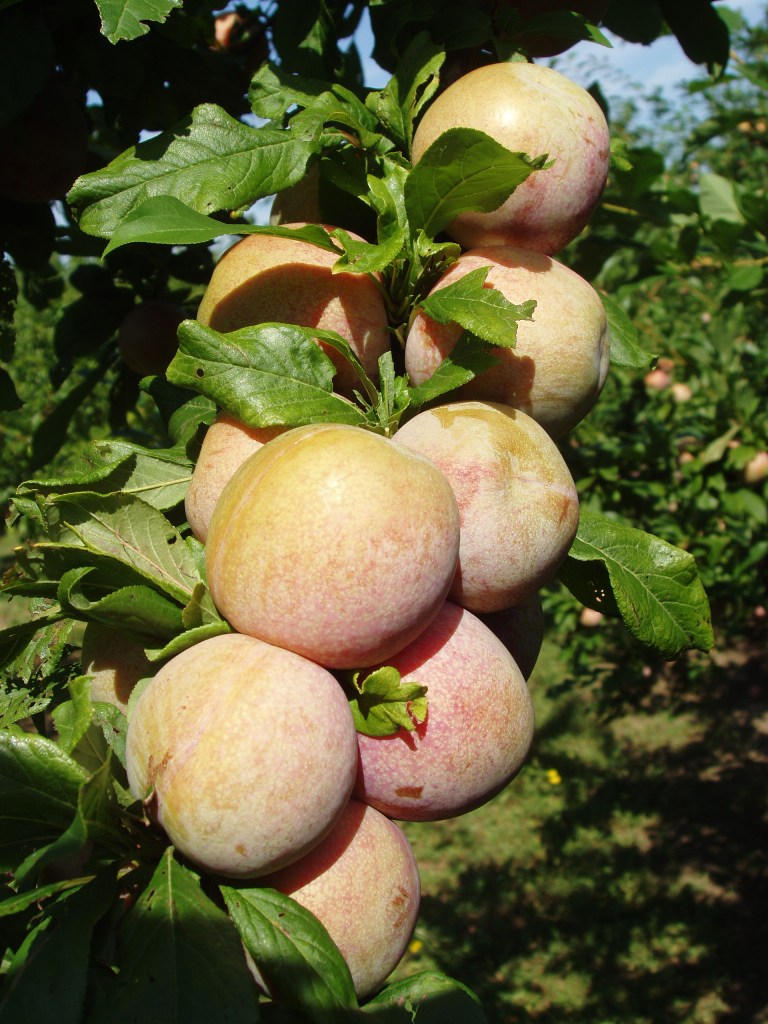
Figure 4.21. Dapple Dandy (Photo: Szilvia Kovács)
Dapple Dandy
Origin: a hybrid of an apricot x plum hybrid of unknown origin and plum under the code number No. 58GA338. A protected cultivar created in the USA. Ripens at the end of July, beginning of August, recommended for the fresh market. The fruits are very large (80-90 g), have a firm flesh, semi-freestone (Figure 4.21.). They are not susceptible to cracking. Self-sterile, its recommended pollinators are ‘Santa Rosa’, ‘Burgundy’, ‘Flavor Supreme’, ‘Flavor King’. It has an upright canopy, the tree is moderately vigorous, medium dense. According to Hungarian experiences, its fruitfulness is good.
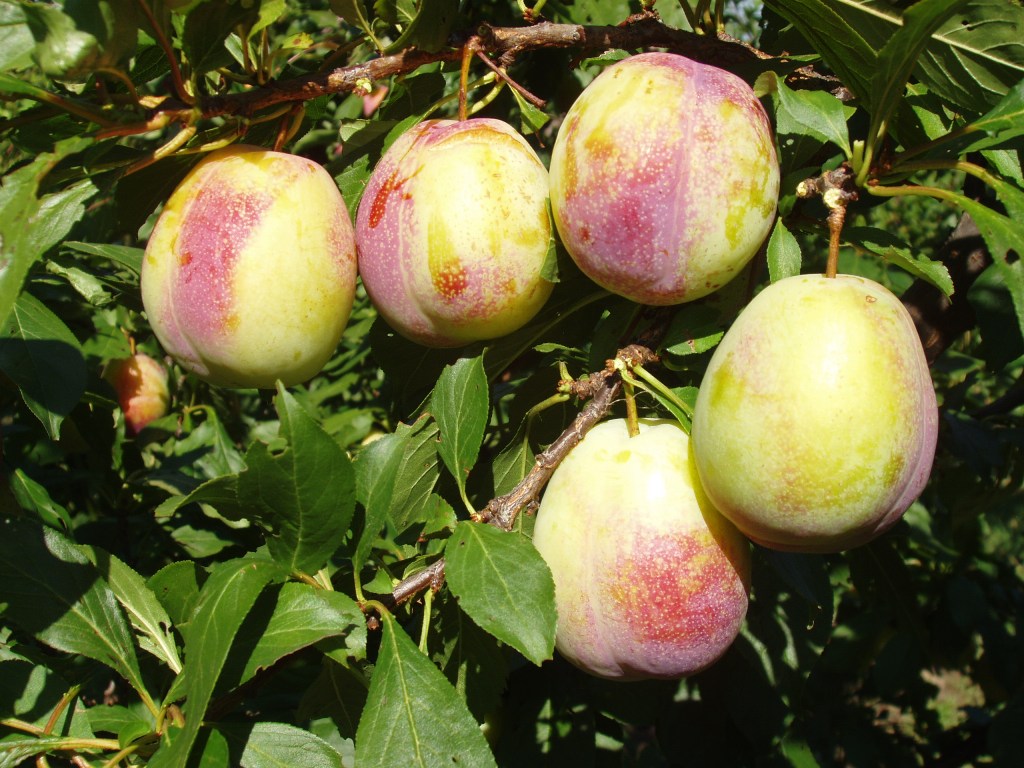
Figure 4.22. Flavor Grenade (Photo: Szilvia Kovács)
Flavor Grenade
Origin: a hybrid of two Japanese plums and an interspecific hybrid, ‘Flavor Queen’. Ripens in the first-second decade of August, it was bred and protected in the USA. Has an outstanding fresh consumption quality, can be transported easily, has a long shelf life. Its fruits are large (60-70 g), develop a cover colour mostly on the sunny side (Figure 14.22.). The fruits are semi-freestone, not susceptible to cracking. Self-sterile, its good pollinators are ‘Flavor King’, ‘Dapple Dandy’, ‘Santa Rosa’. S-genotype: SbSc. The tree is moderately vigorous, has a medium dense canopy. According to Hungarian experiences, it is high-yielding. Fruit thinning and a harvest in two or more stages are recommended.
Control questions:
-
Where can we find the most important breeding centers of European type plum cultivars?
-
Where can we find breeding of Japanese type plum cultivars in the world?
-
What are the major aims of breeding?
-
What are the most common methods of plum breeding?
-
What Prunus species do breeders use to have a better ecological adaptability and winter hardiness inherited?
-
What Prunus species do breeders use to improve fruit quality?
-
What is the reason of the different cultivar use in the world’s areas with different ecological conditions?
-
What Japanese type plum cultivars can be found in almost all of the major plum producing countries?
-
What are the most popular European plum cultivars of the world?
-
Describe the economic significance of mirabelles and cherry plums, as well as their most important breeding countries!
-
Which European plum cultivars can be used for widening the plum assortment?
-
Which Japanese type plum cultivars and apricot-plum hybrids can be recommended for orchards?
Literature:
-
Balmer M. 2012. Sortensprektrum. In. Balmer M., Nyéki J., Apáti F. (szerk.) Pflaumen- und Zwetschenanbau. Kiadást támogatta: MAG., Nemzeti Fejlesztési Ügynökség. 12-32.
-
Bellini E., Nencetti V. 2002. DolFi-Sandra: A new early black japanese plum. Acta Horticulturae. 577: 223-224.
-
Blazek J., Pistekova I. 2009. Preliminary evaluation results of new plum cultivars in a dense planting. Hort. Sci. (Prague). (2):45-54.
-
Bozhkova V. B. 2002. Investigation of Introduced Myrobalan Cultivars Under Conditions of Dryanovo. Acta Horticulturae. 577:225-228.
-
Buchter H. 1999. Japanische Pflaume Obstart für Risiko-freudige. Obst und Garten. 7:248-249.
-
Butac et al. 2011. Overview of plum breeding in Europe. Second Balkan Symposium on Fruit Growing. Romania. 5-7 September 2011. Lecture. http://bsfg2011.icdp.ro/materiale/somepresentations/04Overview%20of%20Plum%20Breeding%20in%20Europe.pdf
-
Frieghelli C. 2009. Susino, quattro cino-giapponesi e un’europea le novitá del 2009. Tecnica e Tecnologia 41: 56-59.
-
Guerra et al, 2010. Japanese plum (Prunus salicina Lindl.) production in Extremadura (Spain). Acta Horticulturae. 874:377-379.
-
Halász J., Hegedűs A., Szabó Z., Nyéki J., Pedryc A. 2007. DNA-based S-genotyping of Japanese Plum and Pluot Cultivars to Clarify Incompatibility Relationships. HortScience 42(1):46-50.
-
Hartmann W. 1998. New Plum Cultivars from Hohenheim. Acta Horticulturae. 478:171-174.
-
Hartmann W. 2008. A modern szilvatermesztés perspektivikus fajtái. (Promising cultivars of modern plum cultivation) Gonda I. (szerk.) Magyar szilvatermesztés – stagnálás vagy előrelépés? Konferencia Füzetek. Debreceni Egyetem. 34-48.
-
Hartmann W. 2010. Opening Address. Acta Horticulturae. 874:19-23.
-
Jacob H. B. 2002. New Plum and Mirabelles Varieties out of the Breeding Work and Development in Genseinheim. Acta Horticulturae. 577:173-176.
-
Jacob H. B. 2007. Twenty-Five Years Plum Breeding in Geinsenheim, Germany: Breeding Targets and Previous Realisations. Acta Horticulturae. 734: 341-346.
-
Janes H., Pae A. 2002. Cherry plum hybrid cultivars in Estonia. Acta Horticulturae. 577: 181-186.
-
Liu W. 2004. Plum production in China. Acta Horticulturae. 734:89-92.
-
Kovács Sz., Gengeliczki E. 2010. Kajszilva fajták termesztési és áruértékének értékelése hazai üzemi ültetvényben. (Evaluation of cultivation and market values of apricot-plum hybrid varieties in a Hungarian orchard) Kertgazdaság. 42. (2.): 28-35.
-
Mattatelli B. et al. 2007. Susino. Suppl. Terra e Vita. 26: 84-88.
-
Okie W. R., Hancock J. F. 2008. Plums. In. Hancock J. F. (szerk.) Temperate fruit crop breeding. Germplasm to genomics. 337-357.
-
Okie W. R., Ramming D. W. 1999. Plum breeding worldwide. HortTechnology. 9(2):162-176.
-
Reales et al. 2010. Phylogenetics of Eurasian plums, Prunus L. section Prunus (Rosaceae), according to coding and non-coding chloroplast DNA saquences. Tree Genetics & Genomes. 6:37-45.
-
Scorza R. et al. 2007. Deregulation of Plum Pox Resistant Transgenic Plum ‘Honeysweet’. Acta Horticulturae. 738:669-673.
-
Sottile et al. 2010. Plum production in Italy: state of the art and perspectives. Acta Horticulturae. 874:25-34.
-
Surányi D., Erdős Z. 1998. Szilva. (Plum) In. Soltész M. (szerk.) Gyümölcsfajta- ismeret és –használat. Mezőgazda Kiadó. Budapest. 258-287.
-
Surányi D., Szabó Z., ifj. Brózik S. 2006. A szilva nemesítés kérdései. (Issues of plum breeding) In. Surányi D. (szerk.) Szilva. Mezőgazda Kiadó. Budapest. 67-81.
-
Szabó Z., Nyéki J. 2002. Japenese Plums in Hungary. Acta Horticulturae. 577:65-71.
-
Szabó Z. 2002. Szilva. (Plum) In Nyéki J., Soltész M., Szabó Z. (szerk.). Fajtatársítás a gyümölcsültetvényekben. Mezőgazda Kiadó, Budapest. 217-245.
-
Szabó Z. 2001. Szilva (Plum) In. G. Tóth M. (szerk.) Gyümölcsészet. Primom Vállalkozásélénkítő Alapítvány. Nyíregyháza. 216-242.
-
Szabó Z. 2001b. Csonthéjas változatok. (Stonefruit variants) Kertészet és Szőlészet. 28:6.
-
Szabó Z. 2004. Szilva. (Plum) In. Papp J. (szerk.) 2. A gyümölcsök termesztése. Mezőgazda Kiadó. Budapest.235-261.
-
Szabó Z. 2008. A jövő gyümölcse a japánszilva? (Is Japanese plum the fruit of the future?) Gonda I. (szerk.) Magyar szilvatermesztés – stagnálás vagy előrelépés? Konferencia Füzetek. Debreceni Egyetem. Debrecen. 52-57.
-
Szenci Gy. 2006. A szilva betakarítása és a szüret utáni műveletek. (Plum harvest and post-harvest operations) In. Surányi D. (szerk.) Szilva. Mezőgazda Kiadó, Budapest. 274-280.
-
http://www.fa-gm.de/fachgebiet-obstbau/geisenheimer-uechtungen/steinobst/pflaume-und-mirabelle
-
http://www.davewilson.com
